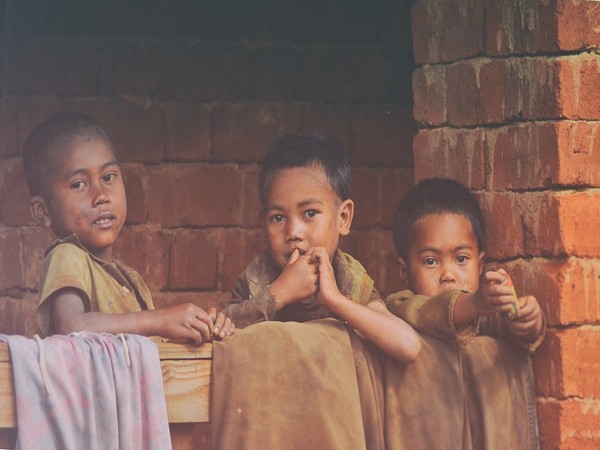New Delhi [India]: When the sustainable development goals (SDGs) were being formulated, Goal 2 was one goal on which all the leaders of the world were unanimous in their decision that hunger will be eliminated from the world by the year 2030.
In addition, it will be given priority for the elderly, children and women especially to achieve the status of safety of food and nutrition. But the problem is that even today we are not ready to accept the actual magnitude of hunger and malnutrition.
Instead of seriously discussing the Global Hunger Index (i.e. GHI report), the debate has been focused on what is the position at which India is placed on the GHI? – 50th or 100th? – If 100th, is it true or not?
Efforts have been made to focus attention on the fundamental causes of starvation. This unsuccessful attempt is nothing more than hiding its failures. The International Food Policy Research Institute (IFPRI) has been measuring the level of starvation in the world through the index for the past several years.
These indexes are important because they assess the status of society by keeping the central focus on children’s nutrition; otherwise normally the reports are bereft of children. These indexes are prepared by adding data related to low nutrition, malnutrition and mortality rate below 5 years.
At first glance, it seems that this is a very limited standard for measuring starvation levels. To a great extent, this is also true; the truth is that the index of starvation needs to be understood from the point of view of life cycle.
It includes gender discrimination, child marriage, violence, education, safe delivery and reproductive rights, the possibility of child survival on birth, breastfeeding and protection of children’s food, maternity rights, protection of natural resources and community rights on them right from the communal-racist untouchability and freedom from violence, the interests of farmers-laborers are also included.
The low position of India in the index indicates the situation of the backward and tribal sections of society. In India, 10.4 million people belong to tribal society. They have their own cultural and social identity and lifestyle. They have consciously made use of natural resources to overcome starvation, but global economic policies have taken away their water, their forest and their culture based system.
According to UNICEF’s report (2016-17) “Nutrition and Tribal People – A Report on Nutrition – Situation of India’s Tribal Children”, when there is sustained food insecurity in family and society, then the growth of the children is more prone to be stunted.
With this, children remain sick, the environment of the school is not good due to adverse conditions and they cannot play the role of a healthy citizen. This situation is created due to poverty, food insecurity, not getting adequate nutrition for women, and not getting mother’s milk in the right way, and poor lifestyle.
This information is not available in the results of the National Family Health Survey (NFHS 4: 2015-16) that how many children are malnourished in the tribal community, but according to NFHS 3 of 2005-06, 54% i.e. 62 lakh tribal children due to persistent hunger and continuous starvation were the victims of malnutrition and stunted physical growth.
In these selected states – Andhra Pradesh, Chhattisgarh, Gujarat, Jharkhand, Madhya Pradesh, Maharashtra, Orissa, Rajasthan and Telangana, 47 lakh tribal children’s growth has been found to be stunted.
It is the constitutional responsibility of the civilized government to pull tribal society out of starvation. In the year 2006, the Parliament had enacted the Forest Rights Act so that tribals were freed from encroachment of forest land.
According to this law, tribal and other forest dwellers were given legal rights to land up to 10 acres of their occupation. Its collective rights were also included so that they could get uninterrupted rights even on forest produce, dry wood, medicines, water, fruits and vegetables.
It was a mandatory step for their dignity and freedom from hunger. What happened to its fate? According to the report of the Tribal Development Ministry, till February 2017, a total of 41.65 lakh claims were made for personal and community interests in India, out of which 18.47 lakh claims were rejected. In the majority of cases, according to the legal provision, the claimants were not told the reason for the application being rejected.
Basically, this issue is linked to our commitment to governance. In fact, society does not have to wait for the report of the Global Hunger Index, if its intention is eradication of hunger. Any crisis is redeemed as an “opportunity for profit”.
If malnutrition increased, then the companies producing nutritious food products begin to push for complete control by getting the government contracts for supply. Some international organizations are making out food to be a very ‘complex subject’, so much so that hunger is now considered to be a disease.
The government has great faith in these organizations, but poor citizens of the country suffer the most when they have to prove their identity every month by producing their Aadhaar cards before they get five kg of rice or wheat or sugar from the public distribution system.
Then the question arises that after all what is the solution to this problem or what is the alternative? The alternative is the experience of thousands of years of Indian society dealing with food security and adverse situations. In contrast to traditional production systems, there is a need to adopt conventional systems of technology. From farming to children’s upbringing and supervision of natural resources, we have many scientific practices. Western European civilizations like Europe and America have also accepted these practicies.
If this is done in the same sequence, then attaining the goal of eliminating hunger completely by the year 2030 is absolutely possible and attainable.
The views expressed in the above article are that of Sachin Kumar Jain of Charkha Development Communication Network. (ANI)

